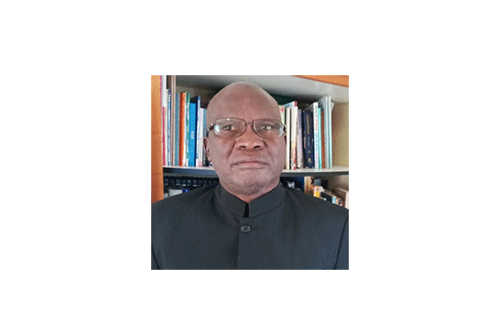Early western educational activities in the Caprivi (now Zambezi) started when David Livingstone, a London Missionary Society evangelist visited both Sebitwane and Sekeletu in 1851 and 1855 at Linyandi and Malengalenga, respectively. The missionary sought to establish a school, but the muddy conditions especially at Sekeletu’s capital, (Malengalenga) impeded his intentions. It was this background laid by David Livingstone, which led other missionaries to establish schools and mission stations in the region and Bulozi of Western Province of Zambia.
Helmore and Price’s 1860 expedition
Another expedition to establish a Mission Station at Linyanti was led by James Helmore and Roger Price in 1860 (Buys and Nambala 2003, Pretorius, 1975). This expedition ended in failure and tragedy that only Roger Price and two of the Helmore children survived to reach Kuruman in South Africa (Kruger, 1984).
The missionaries were given poisoned ox meat and the Helmores and Mrs. Price succumbed to the poison and died. The tragedy that befell the missionaries was Sekeletu’s suspicion of the new arrivals and disappointed at the absence of David Livingstone, who had indicated to build a missionary station at Linyanti and serve as the intermediary who would prevent the Matebele from attacking the Makololo.
Another reason was the disappearance of 120 carriers who had accompanied Livingstone to the east coast several years before which soured the Makololo. Sekeletu realized the impact Western education and influence would have on his subjects, by adhering to foreign Western religion. Roger Price and John Mckenzie twice prepared to make another effort, but the increasing unrest in the Kololo empire and the years of bloodshed between 1865 and 1885 withheld them from realizing that (Northcott,1961).
Reverend Reed of the London Missionary Society
Another missionary expedition to penetrate the Mamili area was that of Reverend Reed of the London Missionary Society towards the end of the First World War. His canoe was overturned by a hippopotamus and as a result, he contacted malaria and died (Schwarz, 1928).
Paris Missionary Society
Other missionary pioneers notably the Paris Missionary Society followed but only managed to build the first school at Sesheke (now in Western Province of Zambia) in 1887 pioneered by Francois Coillard. By that time, the Zambezi Region still resorted under the Luyana kingdom. Reports of the Bechuanaland Protectorate Administration of 1925 indicate that there were Seventh Day Adventist schools at Katima Mulilo and Linyanti and others in other parts of the Region under its management. . Gilbert Willmore was the first Resident Missionary and consequently followed and succeeded by others. The two schools relied on the fees paid by parents and moneys raised from the communities (Kruger, 1984).
In 1939, the Union of South Africa took over the Caprivi Region from the Administration of South West Africa and in 1940; the school at Linyanti was re-opened. Because of the Second World War, the Seventh Day Adventist Church with its regional headquarters in Bulawayo, (Zimbabwe) found itself unable to satisfy what the Administration of the Union of South Africa expected of it in terms of a better curriculum. It withdrew its White missionary staff and abandoned the Katima Mulilo Mission Station and the management of the schools. The Mission also complained of apathy and failure of discipline on the part of the parents and no backing from the traditional authorities (Kruger, 1984).
Bush schools
There were bush schools at Sibbinda and Makanga through self-help initiatives. The learners met under a tree every day and the teachers from the local communities, who mastered the Ten Commandments, taught them. Despite their defects, bush schools rendered a great service because they enabled the learners some basics to read and write although neglected, poor and under-supervised. The buildings were usually shacks of mud and grass thatched structures and sometimes learners were taught under trees, hence no classes during rainy seasons. The curriculum comprised of three R’s (reading, writing and basic arithmetic), gardening, local crafts and character development through moral and religious instruction and practice.
Roman Catholic Church
The withdrawal of the Seventh Day Adventists brought the Roman Catholics to the Caprivi in 1944, who were well established at Sichili in Zambia and their regional headquarters at Victoria Falls. The Roman Catholics first established their school at Lisikili and later moved to Katima Mulilo in 1945 (Kruger, 1984).
Sibbinda Primary School
After a journey on foot of almost 200 km from Katima Mulilo via Linyanti to Sibbinda, Father Albius held discussions with the community at Sibbinda in 1948 pertaining to the possibility of opening a school there. On 16 August 1949, Sibbinda Primary School opened its doors to some learners who were schooling at Linyanti and others who were picked and recruited in the vicinity (Sibbinda Primary School History, 1994). Sesheke Primary School was opened in 1950. There were 15 schools in the Caprivi by 1959, of which the outlaying ones went up to Standard 2 (Grade 4) except for the one at Katima Mulilo, which offered Standard V1 (Grade 8). One Bantu Community School was established at Kanono in 1960 (Kruger, 1984).
In the 1960s, 1970s and 1980s many primary and secondary schools were established in the Region. During this period (particularly in the sixties), many young girls were picked by the Roman Catholic Church and gave them free primary education at Pius Girls School.


